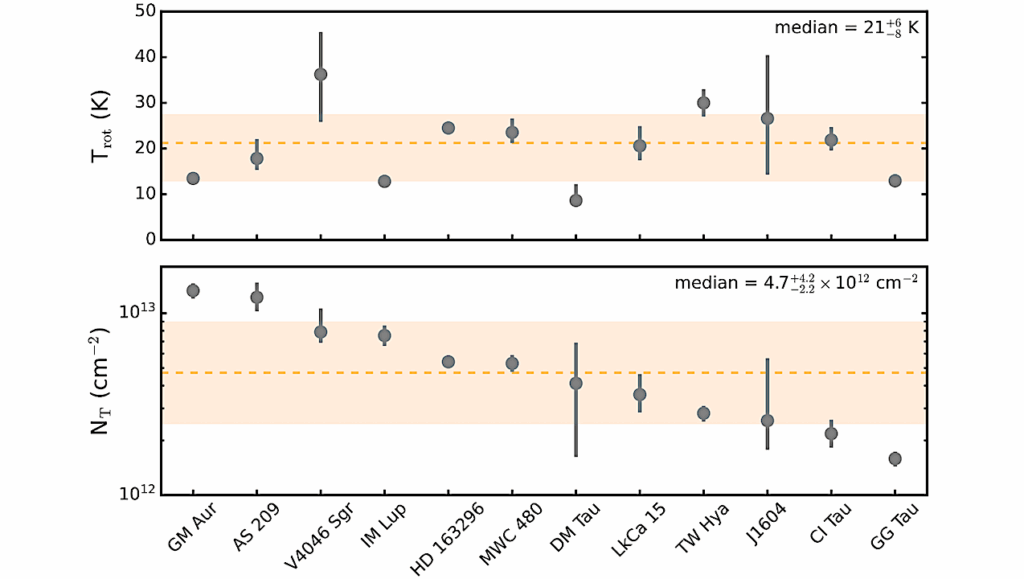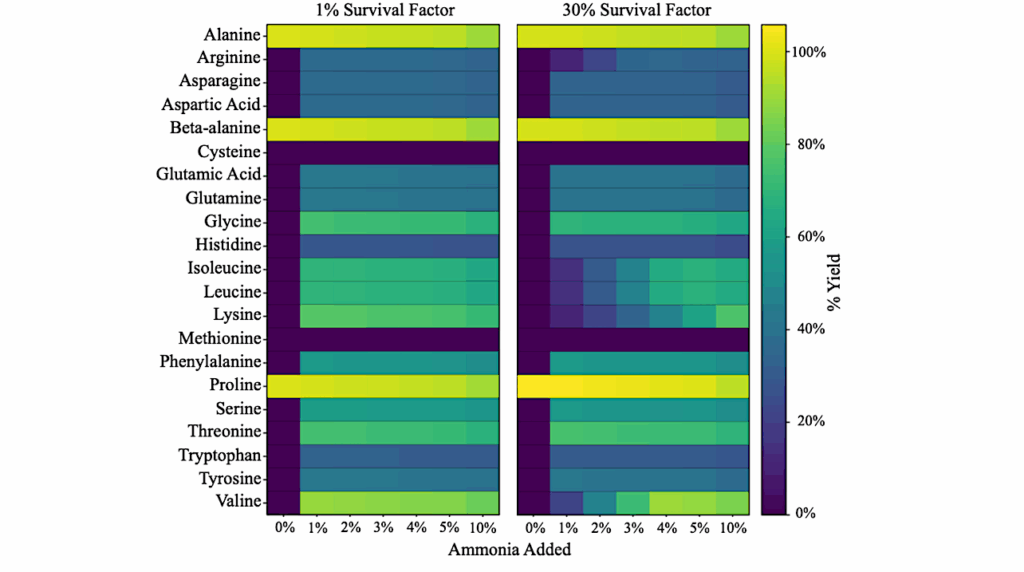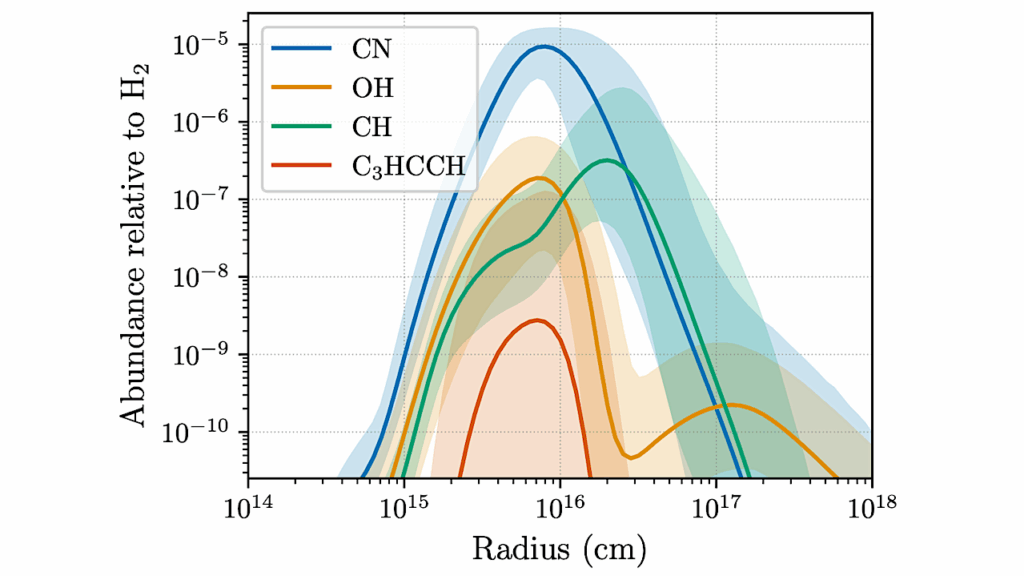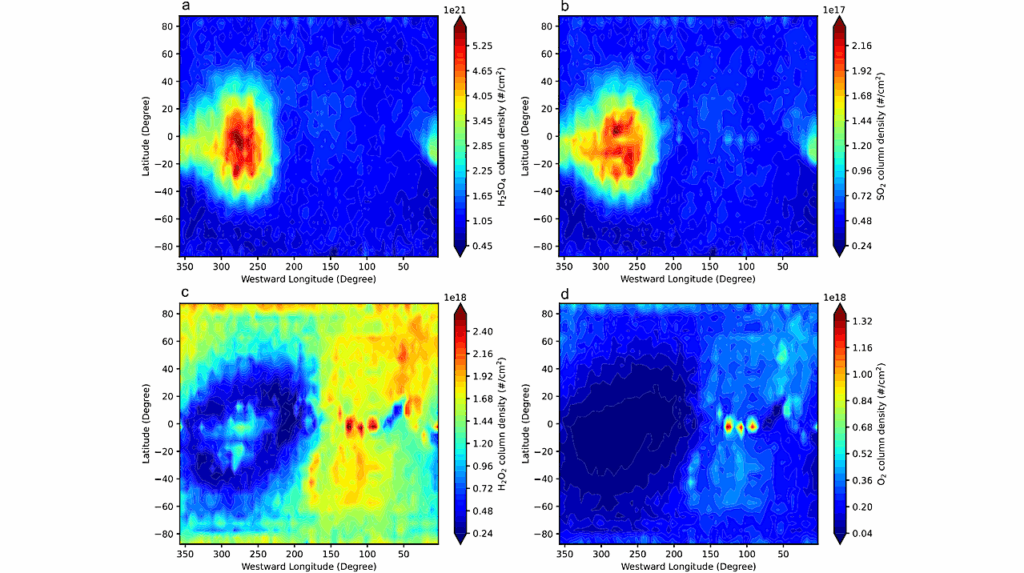Retreating Snow Line Reveals Organic Molecules Around Young Star

Young stars are often surrounded by a protoplanetary disk where planets are forming. Astronomers study the composition of protoplanetary disks to better understand how planets, like Earth, formed and evolved into their modern chemical composition.
Astronomers are particularly interested in volatiles, including water and organic molecules.
Based on the temperature, volatiles can exist either as gases or as ices in a protoplanetary disk. The temperature of the disk is high in the center near the star, and gradually deceases towards the periphery. The radius where the temperature drops to the point that gas deposits into ice is called the “snow line.” Inside of the snow line organic molecules exist as gases; outside of the snow line they are found in ice.
It is easiest to detect organic molecules in the gas state, but unfortunately in most cases the snow line is close to the central star where observations are difficult. A research team led by Jeong-Eun Lee (Kyung Hee University, Korea) used the Atacama Large Millimeter/submillimeter Array (ALMA) to search for organic molecules around V883 Ori, a young star located 1,300 light-years away from Earth. This star has displayed a recent rapid increase in brightness that pushed the snow line outwards, sublimating the ice in the disk. Typically the radius of a snow line is about the same as the radius of the asteroid belt in our solar system (400 million kilometers). In contrast V883 Ori’s snow line is located 9 billion kilometers from the star, double the radius of Neptune’s orbit. ALMA’s sharp vision and this enlarged snow line allowed the research team to detect complex organic molecules including methanol, acetone, acetaldehyde, methyl formate, and acetonitrile. This is the first time that acetone has been unambiguously detected in a protoplanetary disk.
“The abundance ratios we found for organic molecules around V883 Ori are similar to those found in comets, but there are important differences as well.” explains Lee, “This indicates that the chemical composition of a disk evolves over time. We will use ALMA to investigate stars at various stages of development that are experiencing a sudden increase in brightness to investigate the chemical evolution of the organic molecules which are the building blocks of life.”
Reference: “The Ice Composition in the Disk Around V883 Ori Revealed by Its Stellar Outburst,” Jeong-Eun Lee et al., 2019 Feb. 4, Nature Astronomy [https://www.nature.com/articles/s41550-018-0680-0, preprint: https://arxiv.org/abs/1809.00353].
This research was supported by the National Research Foundation of Korea, the Korea Astronomy and Space Science Institute, Japan Society for the Promotion of Science, the National Science Foundation of China, National Research Council of Canada, and the Natural Sciences and Engineering Research Council of Canada.








